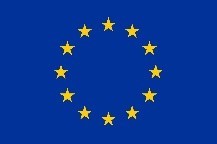Space is getting ever more congested. The EUSTM project is enabling Europe to be at the forefront of the rapidly advancing space sector to ensure the safety, sustainability and security of space exploration.
Space has never been more accessible than it is today. The number of satellites we are currently deploying is the highest it has ever been in human history.
With such rapid advancements in technology and mega-constellations in deployment, space is getting ever more congested. The rapid increase of space activities raises concerns about the safety, security and sustainability of future operations.
To safeguard the sustainability of the space environment, clear and bold regulations are necessary to be implemented and adhered to. These guidelines will ensure a sustainable space environment by improving the detection of space objects, promoting data sharing for collision avoidance and enhancing the lifecycle of satellites.
Thanks to the EU-funded, European space traffic management for the 21st-century space operations project, we can
- Access currently available European scientific and technical capabilities
- Identify future space traffic management needs for its stakeholders and main user needs for an autonomous European STM capability
- Analyse existing space traffic management guidelines and best practices, benchmarking and defining new ones, aiming at ensuring security, safety and sustainability of space operations
The EUSTM consortium comprises experts from companies and institutions working on surveillance technology, policy and regulation, strategy and operations in space, helping Europe to be at the forefront of the rapidly advancing space sector, strengthening its network of experts to lead European STM efforts in the decades to come.
#EUSTM #EUSST #horizoneurope #spacetrafficmanagement #spacesurveillance #spacetracking #spacedebris #sustainablespaceexploration
 | This project has received funding from the European Union’s Horizon 2020 research and innovation programme under grant agreement No 101004319. This article reflects the author’s view and not necessarily the views of the European Commission or of the European Health and Digital Executive Agency |